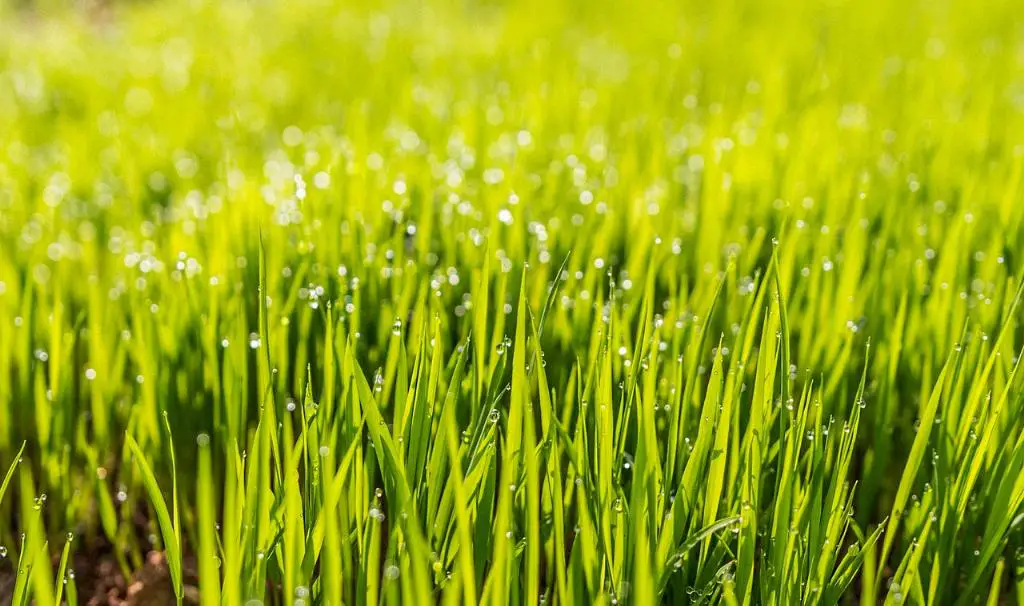When it comes to the issue of lawn rust, it’s essential to differentiate between the common perception of rust as a result of metal corrosion and the fungal diseases that can affect grass. Unlike the rust you might find on your car, which stems from a chemical process, lawn rust is caused by various species of fungi belonging to the order Pucciniales.
These fungal pathogens can have a significant impact on the health and appearance of your turfgrass. They are named “rust diseases” due to the characteristic orange-yellow, rusty appearance they give to grass blades. This visual cue can help you identify the presence of rust on your lawn and take appropriate measures to address the issue.
One of the primary causes of lawn rust is environmental conditions that favor the growth and spread of fungal pathogens. Rust diseases tend to thrive in warm, humid weather, making them prevalent during the summer and early fall months. Excess moisture on grass blades and in the surrounding soil creates an ideal breeding ground for these fungi to proliferate.
In addition to environmental factors, certain cultural practices can also contribute to the development of lawn rust. Overcrowded turf, poor air circulation, and inadequate sunlight exposure can weaken grass plants, making them more susceptible to fungal infections. Improper mowing techniques that stress the grass or lead to uneven cutting heights can further exacerbate the problem.
Furthermore, nutrient imbalances in the soil can play a role in the onset of lawn rust. Grass that lacks essential nutrients, particularly nitrogen, may exhibit signs of weakness and increased vulnerability to fungal diseases. It’s crucial to maintain proper fertilization practices to ensure that your turfgrass receives the necessary nutrients for healthy growth and resilience against pathogens.
Another contributing factor to lawn rust is the presence of thatch buildup in the lawn. Thatch, a layer of dead organic matter that accumulates between the grass blades and soil surface, can harbor fungal spores and create a favorable environment for disease development. Regular dethatching and aerating of the lawn can help prevent thatch buildup and reduce the risk of rust infections.
While it’s important to understand the underlying causes of lawn rust, equally crucial is knowing how to effectively manage and control the disease once it appears on your grass. Implementing proper lawn care practices can help minimize the impact of rust diseases and promote the overall health of your turfgrass.
One key strategy for managing lawn rust is maintaining adequate air circulation around grass plants. Proper spacing between individual turfgrass specimens, along with regular dethatching and aerating, can improve airflow and reduce humidity levels, creating a less favorable environment for fungal pathogens to thrive.
Additionally, practicing good watering habits can help prevent the excessive moisture buildup that encourages rust diseases. Watering your lawn in the early morning hours and avoiding evening irrigation can reduce the length of time that grass blades remain wet, minimizing the risk of fungal infections. Ensuring proper drainage in your lawn can also help prevent waterlogged conditions that promote disease development.
Applying fungicides as a preventive measure or in response to an active rust outbreak can be an effective means of controlling fungal pathogens on your lawn. Consult with a local lawn care professional or garden center to determine the most suitable fungicide products for addressing rust diseases specific to your region and turfgrass species.
It’s important to keep in mind that biological control methods, such as introducing beneficial microorganisms to the soil, can also help suppress fungal pathogens and enhance the natural defense mechanisms of your grass. By fostering a healthy and balanced ecosystem in your lawn, you can reduce the prevalence of lawn rust and other turf diseases.
In conclusion, the causes of lawn rust are diverse and multifaceted, encompassing both environmental factors and cultural practices that influence the susceptibility of grass to fungal infections. By understanding these underlying causes and implementing comprehensive lawn care strategies, you can effectively manage and control rust diseases on your turfgrass, ensuring a vibrant and healthy lawn for years to come.

